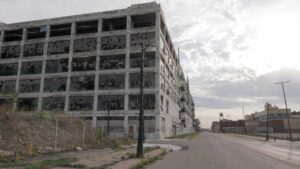
This interdisciplinary field borrows elements and procedures from architecture and related disciplines. It also takes in aspects of public administration, sociology, law, urban geography, economics, and social sciences. To be successful in this field, one must develop a broad understanding of a wide range of subjects and disciplines. Listed below are some common characteristics of a good urban design professional. They may also benefit from a background in one or more of these areas.
Architects have long been responsible for the evolution of urban planning. The rise of the modernist movement has also led to a plethora of styles and approaches. In the twentieth century, architects such as Le Corbusier, Frank Lloyd Wright, and Ebenezer Howard made significant contributions to the art of urban design. These architects, along with many other prominent modernists, have helped to shape the way we live and work in our cities.
The 20th century saw the rise of modernism and industrialization. Many towns were expanding at an enormous pace, creating problems for the working class and raising concerns about public health. The laissez-faire approach of the Victorian period was giving way to New Liberalism, which gave the public more power in the planning process. During the last decade, urban design has gotten much attention. This article highlights some key elements of modern urban design. Once again, it is vital to understand that cities are living systems and not isolated islands of development.
The Black Lives Matter movement is a popular example of a new movement that has challenged design thinking. The movement emphasizes the injustices experienced by people of color in urban spaces and the right of the community to share public space without discrimination. This movement also argues that minority groups are often denied certain spatial privileges, which are vital for survival. Equal identification of socioeconomic and economic lives is essential for equitable urbanism. As a result, new approaches and methods are emerging.
In addition to its application to urban neighborhoods, urban design can be used to improve local transportation. In Seattle, the Roanoke interchange lid design was a multi-faceted solution that addressed concerns of surrounding neighborhoods and connected parts of the historic Olmsted Boulevard and open space network. This solution was a consensus effort among multiple government agencies. It has also improved the quality of life in many communities. The design has many other advantages, including providing more housing opportunities, and integrating environmental issues.
Emergent bottom-up practices in urban architecture reveal that the practice involves various tactics for designing a place. These strategies, including temporality, ad-hocism, and looseness, are a part of pedagogical practices that allow a continual representation of user needs. As a result, this practice has become a central teaching tool for architecture and urban design programs. Its use in architecture and urban design will inspire future architects.
Urban landscape design
A comprehensive understanding of the current city and design choices is vital for the development of a successful urban landscape design. Site surveys are a crucial part of the planning process, assessing important site information. These include topography, zoning restrictions and requirements on a local, county, or statewide level, and climate and weather conditions. The results of a site survey will help a landscape designer decide on a suitable location, and guide the selection of building materials.
An urban landscape design typically incorporates a focal point. Some popular focal points include ornate fountains, riverfront boardwalks, monuments, and famous landmarks. Other popular elements of an urban landscape design are trees located along streets, aromatic flowers and plants, shrubs, bushes, and water features. These elements create a sense of natural beauty. In addition, plantings in an urban landscape can include evergreen trees and plants that provide autumn color.
A properly designed urban landscape should serve as a community’s social, economic, and cultural life. It must maintain the community’s way of life, enhance usability, and enhance the local ecosystem. The process of urban landscape design is complex and requires a team of professionals. Some of these experts include architects, surveyors, landscape designers, horticulturists, and conservationists. There are many elements of an urban landscape design that must be incorporated in order for a city to achieve its full potential.
When considering a landscape design, it is vital to keep in mind the city’s ecosystem. Using native plants is a great way to preserve a city’s ecosystem while still creating an urban oasis. Native plants are low-maintenance and often provide beautiful, natural beauty while encouraging stewardship of natural resources. Shade structures can be an excellent option to create an outdoor oasis for residents and visitors alike. Furthermore, shade structures can be placed in strategic locations to provide a comfortable spot for pedestrians to sit and enjoy nature.
A multi-housing industry is transforming lawns into multi-functional spaces. With modern amenities such as outdoor TVs, WiFi connections, and green roofs, multi-functional urban landscapes have become increasingly popular. Added to this, colorful flowers are mixing with foliage to create a unique design. In addition to providing a peaceful atmosphere, this trend also helps property values. For those who have no space for lawns, an urban landscape design that incorporates these features is ideal.
The concept of sustainable resource management in the context of urban landscape design has important implications for the global economy. The growth of urban areas has spawned ecological concerns regarding the quality of natural resources and the identity of cities. Urban landscape design is a unique means of addressing these issues, and should be embraced to help local communities meet these challenges. You will need to integrate the perspectives of urban planners, and the public to make a positive contribution to this change.
In addition to addressing these environmental concerns, the development of the urban landscape requires a broader understanding of the relationship between urban environments and nature. Increasing population in cities and developing countries has created a significant strain on our cities’ water resources and air quality. The use of concrete and deforestation has contributed to urban air pollution and increased temperatures. Taking a holistic approach to landscape architecture helps urban areas adapt to changes in the climate.
Urban style interior design
Urban style is a mix of industrial and contemporary design elements to create a unique and bohemian look. Common elements of this style include unfinished concrete floors, exposed brick and timber beams, bespoke fixtures, and luxe textiles. This style lends itself well to open-plan living. City dwellings, studio apartments, and converted warehouses are ideal examples of homes that have been given an urban makeover. Whether you’re looking for a fresh look or want to add a contemporary twist, urban interior design is an excellent choice.
For a fresh, urban feel, consider a few simple design elements and make them a part of your new home. Many urban style houses have exposed beams and metal staircase railings. Incorporate bronze and gold fixtures and window treatments, as well as vintage furnishings and furniture to create a distinctive and eclectic look. You can even add statement pieces to make your home feel like a downtown condo or loft. Listed below are some tips to get started.
Use warm paint colors to balance the dark tones of the industrial pieces. Alternatively, use a dark color on the walls to lift the mood. You can also add an oversized painting to cover a wall space. Add a large wall clock or a mural to add drama to the urban look. This style is a great choice for those who are passionate about fashion, music, and art. Just make sure you choose the right combination of colors, and you’ll have a striking interior.
Urban style interior design focuses on mixing various styles into a seamless whole. From modern to industrial, this style emphasizes contrasting elements, comfort, and the exciting energy of city life. Soft furnishings and continuity of design are key elements in this style. It will make your home look distinctly urban. But there are a few tips you need to keep in mind when implementing this style in your home. If you’re looking for a fresh, modern look, consider the following tips.
Velvet accent chairs are another great way to add a pop of color to an urban decor style. Velvet is one of the most popular fabric choices today and comes in rich hues that add softness and pizzazz to any room. Plus, velvet accent chairs can add a cozy ambiance and can make a neutral room come alive with a splash of colour. You’ll want to incorporate velvet accent chairs to give the space an urban-chic feel.
A small bedroom is an essential part of urban style interior design. With limited space, it can be difficult to fit everything you want. While a large room can house everything, a smaller space is limited in the ways you can organize things. To keep your room comfortable and stylish, you need a mirror, a dressing table, a large wardrobe, and ample storage space. You can also make the room look bigger by incorporating more storage space.
Urban design furniture
For the modern urban city, integrating urban design furniture is a necessity. The resulting space can be aesthetically pleasing as well as functional. These pieces can serve many purposes, from providing seating to adding functionality to a workspace. Here are some ideas for urban design furniture. Listed below are a few of the latest pieces in this genre. These are designed to enhance the urban environment and add to the city’s overall aesthetic. For more ideas, browse through the following articles.
One of the key features of adaptable urban furniture is that it allows people to play an active role in the design of their city. For example, William H. Whyte and his team studied public squares and parks in New York, and discovered that people would move their chairs before sitting down. As a result, the team devised movable urban furniture. Depending on the climate of a city, it may need more or fewer shelter elements.
The urban aesthetic combines contemporary pragmatism with open spaces. The roots of this trend are in converted buildings and renovated warehouses. Urban design furniture often features unfinished surfaces and architectural details. This style allows for experimentation and reflects an urban lifestyle. Often, urban dwellings have multi-use environments and integrated dining and living areas. This style of home decor requires careful consideration of space and the selection of furniture that blends well with each other.
Often, the term urban furniture refers to a wide variety of items that can contribute to the aesthetics, functionality, and communication of a city. These include bicycle racks, park benches, streetlights, planters, picnic tables, and other elements of the cityscape. The goal of these pieces is to encourage a social and personal interaction in a city. The objects are designed to be functional and adaptable, which is important to the needs of the modern urban community.
For the outdoor space, street furnishings create settings where people can rest, eat, and interact with others. These items can be especially valuable to people with limited mobility, elderly people, and adults with small children. Urban furniture has an important social role to play in creating an enjoyable and comfortable atmosphere in public spaces. It can bring people together, fostering social interaction. So, consider these ideas for urban design furniture:
Despite the fact that urban furniture is often used to enhance the appearance of urban spaces, it is crucial to consider the user of the furniture in order to create a welcoming atmosphere for everyone. While many products are crafted for the dominant user group, they are not designed to accommodate people of all types. They should be made to be inclusive and safe for all urban dwellers. This will help increase the city’s appeal as well as its public image.







